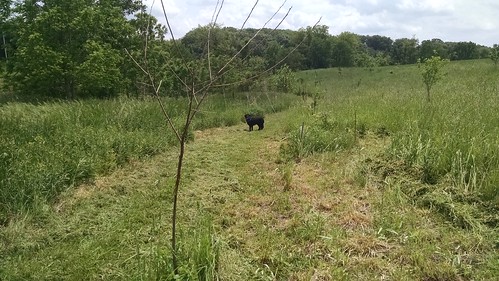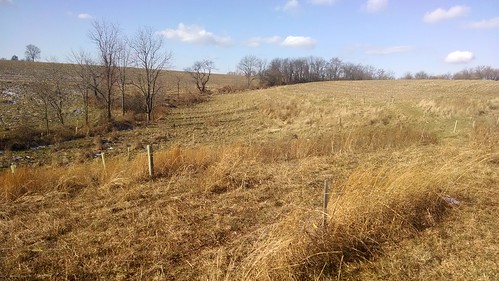
At the English farm in York County, Pennsylvania, you’ll find a comfortable streamside setting that includes a babbling brook, clear water, singing birds, and a thriving young stand of trees -- all nestled in a productive cropland setting. However, this wasn’t always the case. Don English, the son of the owner of the farm, recalls, “Until we planted these four acres into a buffer by enrolling in the Conservation Reserve Enhancement Program (CREP), this creek ran brown with sediment after every rain. Within a year the water cleared up and now we’re seeing the aquatic life return.” This creek runs into the Deer Creek, which in turn runs into the Chesapeake Bay. The buffer is a part of a larger USDA effort to improve water quality and help restore the Bay.
Buffers are vegetated strips of land along streams, creeks, lakes, and others bodies of water that are designed and installed to intercept sediment, nitrogen, phosphorus, and other contaminants before they enter the waterway. In addition, buffers provide habitat and travel corridors for wildlife, sequester carbon, provide structure for aquatic species, and provide aesthetic benefits.
The Chesapeake Bay, the largest estuary in the United States, is a natural treasure. It also has elevated levels of nitrogen and phosphorus that lowers water quality, negatively affecting important species such as submerged bay grasses, blue crab, oysters, and fish species. Four USDA agencies, Agricultural Research Service (ARS), Farm Service Agency (FSA), Natural Resources Conservation Service (NRCS), and Forest Service (USFS), along with the six Chesapeake Bay states are working with landowners to install buffers to reduce nitrogen and phosphorus going into the bay.
FSA administers the CREP by helping landowners put eligible crop and marginal pasture land into buffers, and by providing annual rental, cost-share, signing incentive, and practice incentive payments. These payments offset the cost establishing and maintaining the buffer. FSA, USFS, NRCS, and the States work with landowners to help them be aware of the program, understand their options, and help them develop a conservation plan that works for their farm.
An exciting aspect for this work is USDA’s commitment to measuring and reporting conservation benefits. ARS is taking the lead in monitoring and quantifying the water quality and aquatic life benefits provided by CREP buffers. By observing and recording buffer characteristics, the surrounding land use, surface and subsurface water flow patterns, and measuring the sediment and nutrients intercepted by different CREP buffers, ARS scientists will help to identify conditions that maximize the effectiveness of the buffers. The ARS monitoring and assessment is contributing to better conservation, cleaner water, and a healthier Chesapeake Bay.



